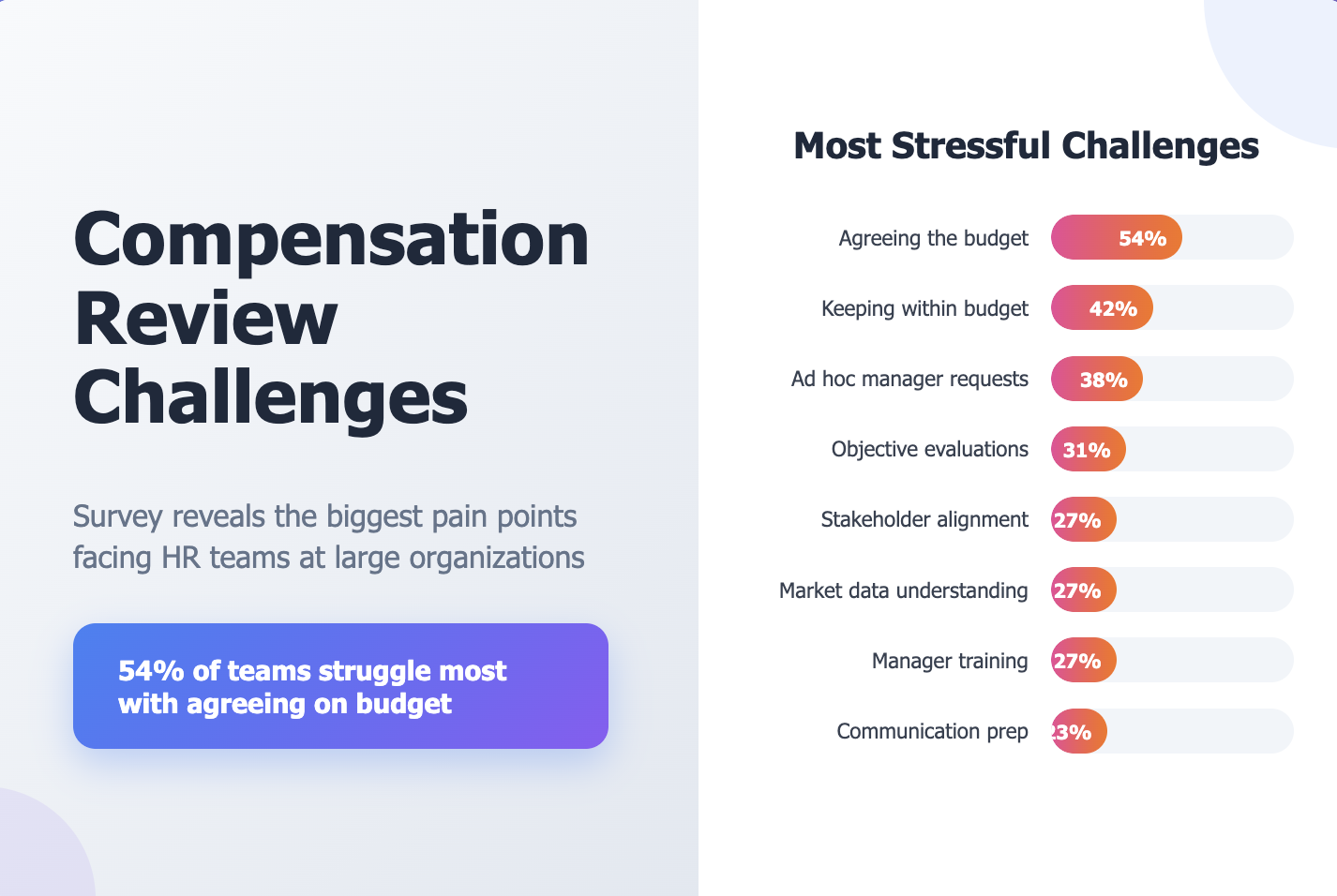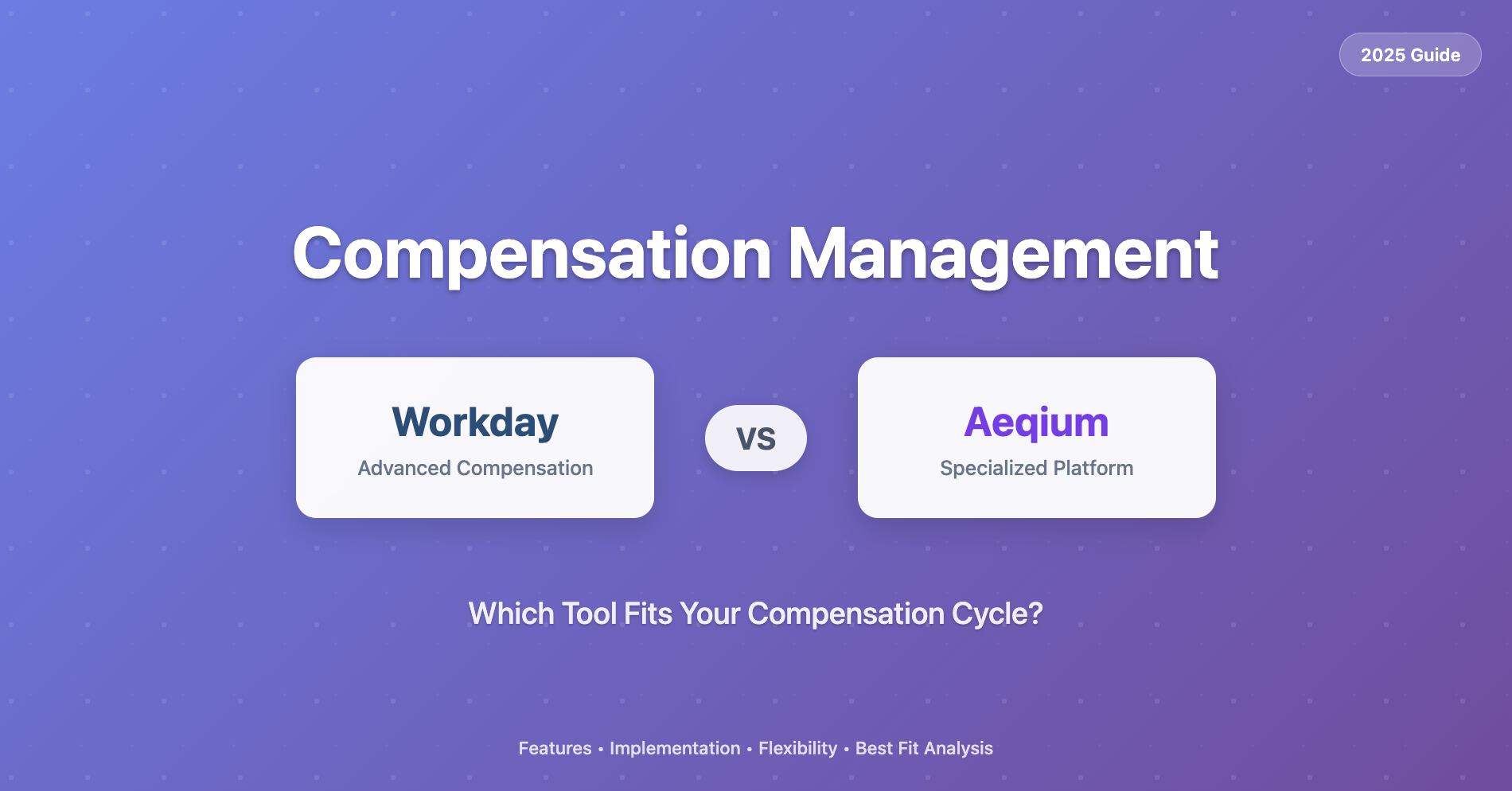What Is a Compensation Cycle?

Compensation cycles are scheduled time periods where managers at a company evaluate and update compensation for their teams. These cycles are one of the most important fundamental elements of a well-oiled compensation management system. Read on to learn more about what compensation cycles are and how to run them effectively and efficiently.
What happens in a compensation cycle?
Compensation cycles are scheduled time periods during which teams evaluate employees’ total compensation. During this time period, teams typically evaluate and adjust the different components of compensation, including:
- Base salary
- Bonuses
- Commission-based compensation structures
- Equity
Benefits such as health insurance or gym memberships are typically not evaluated as part of a compensation cycle.
Companies typically look at compensation benchmarks, employee situations (such as inflation rates or recent employee attrition) and individual performance to determine the size and nature of the compensation changes that employees should receive.
How often should you run compensation cycles?
Most companies run compensation cycles once or twice a year, often coinciding with a broader performance assessment period in which raises and promotions are determined. There are several reasons to run compensation cycles more frequently:
- More frequent compensation cycles give you the ability to increase team members’ compensation more often. Most companies prefer not to run off-cycle compensation increases in order to increase consistency and reduce the incentive for team members to negotiate constantly; with more frequent cycles you can more easily keep compensation competitive and adjust to changing market conditions.
- More frequent compensation cycles reduce variance in employee experience for team members who start shortly before the next compensation cycle occurs. With annual compensation cycles, these employees might find themselves needing to wait well over a year before receiving any compensation increases, even with excellent performance.
On the other hand, running compensation cycles less frequently has several advantages:
- Running compensation cycles takes time from managers and operational teams. All of this time could have been spent improving the business in other ways.
- Compensation cycles are usually tied to performance assessments because employees’ performance is typically a major input into compensation changes that they would receive. Running more frequent compensation cycles effectively opts your team into more frequent performance assessments, which compound the time required.
To balance these pros and cons, some teams run biannual compensation cycles that differ in the types of increases that are under consideration. For example, team members might be eligible for equity refreshes in a June compensation cycle, and eligible for base or bonus changes in a December compensation cycle.
Who is impacted by a compensation cycle?
Even when compensation cycles occur more frequently than annually, employees are often only eligible for promotions, merit increases (raises), or additional equity grants every 12 months.
Eligibility guidelines are an important part of designing an effective compensation cycle process. Promoting or granting large cash / equity increases to all employees every year can quickly cause your team’s budget to grow out of control. As a result, it’s critical to set employees’ expectations correctly so that they understand that frequent large compensation increases may not be possible for your company’s financial situation.
How do you run a compensation cycle?
Compensation Cycle Outcomes
During a compensation cycle, teams need to assess all of their eligible employees and determine what actions to take. For eligible employees, there are a few potential actions that can make sense, typically based upon a combination of eligibility, current compensation, and employee performance:
- No compensation update: Typically when an employee is not performing at a level such that they deserve an increase or when the company is under financial pressure.
- Market update: An increase to keep compensation competitive with the market. Can be of any size depending upon changes in the broader industry.
- Cost-of-living update: A small increase to keep up with cost-of-living increases (often 1-5%, but can vary depending upon factors such as inflation).
- Merit increase: A moderate increase for solid to great performers (often 5-15%). These increases typically move an employee up within a compensation band.
- Promotion increases: An update similar to a merit increases except that it accompanies a promotion. Can sometimes be larger than merit increases would be otherwise.
- Equity grants: Additional equity granted to an employee based upon performance, regular refreshes, or both.
Compensation Cycle Factors
Once employees have been placed into these categories, managers need to decide upon the size and type of increases that employees should receive. These increases can be impacted by many factors:
- Individual employee situations, such as job performance or current placement within band
- Standard guidelines. For example, some teams provide standard cost-of-living adjustments for different geographies, or a particular set of roles might require a larger increase due to market conditions
- Budgeting
- Manager discretion, particularly at the executive level
One key element of running an effective compensation cycle is information. Compensation cycles involve several different types of data, including employee performance, recent offers, market data, inflation, regional cost of living, pay equity, current compensation bands, and more. Making this type of data available to managers and decision makers allows them to make better, faster calls on how to change employees’ compensation as part of the cycle.
You should also consider using software products to help you run your compensation cycles. Using a product such as Aeqium’s compensation cycle product can help you automate tedious steps that would otherwise need to be run out of spreadsheets. Compensation management software can help you pull in compensation data from current pay to comp bands, and allow your team to make decisions with ease.
We’ve also built in handy UX features to ensure governance, such as an audit trail of updates, approval flows, and seamless communication with employees. All of these features can help your team save time.
Conclusion
Compensation cycles are a critical component for accomplishing the primary goals of compensation management, from retaining and growing your team to ensuring a high degree of employee engagement. By running efficient and effective compensation cycles, you can ensure that your team are happy and motivated – all while minimizing time and headache so that you can get back to the important work of building your business.




